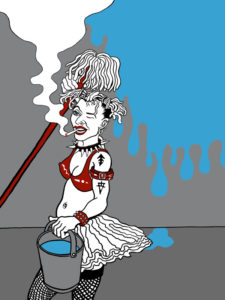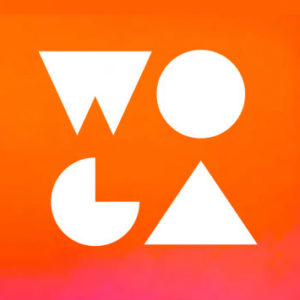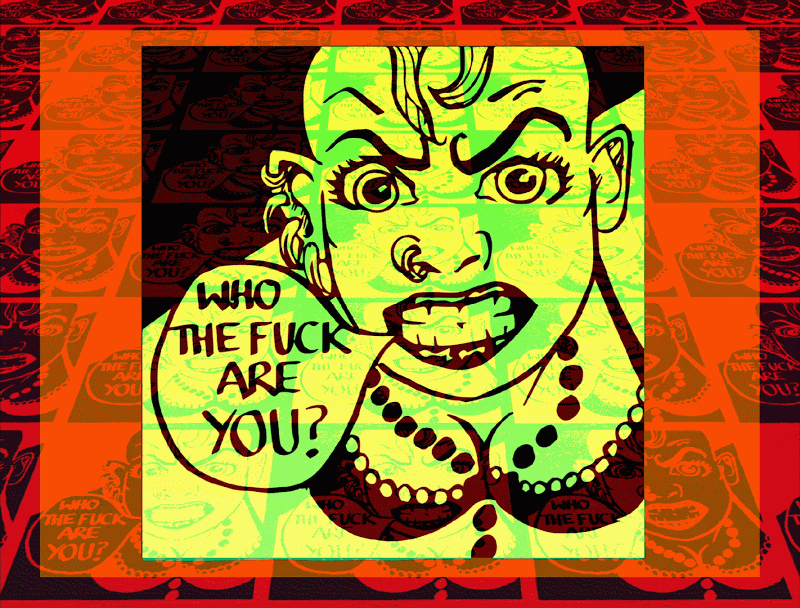We often hear the refrain, on Twitter and elsewhere, “We need more women in cryptoart!” or “Why aren’t there more women in NFTs?” and while well meaning statements and questions, the answer underlies an issue with farther reaching consequences.
The response, of course, is: “We are here.”
That same answer is also true for other ‘under-represented’ groups that people deserve to hear more about. More diversity would be good, and anything that we can do to encourage more diversity in the people joining the NFT community the stronger that community will be – and the more resilient it will become as a result.
One possible view is that these groups are just not being seen and we can begin to ask ourselves why that is. So let’s pick apart both the question and the answer. Let’s go deeper and look at both what the question assumes, (there aren’t any, or not enough, already) and what the answer presents as a challenge.
So, the first question to ask is: is it genuine? I believe in most cases it is. Most of the people I see asking this question genuinely believe that there aren’t many women in cryptoart already. So kudos to them for speaking up and wanting to try to address the issue as they see it.
There are lots of things that can be done to raise visibility of a diverse range of artists and artworks. But there are other things we can also do that allows this diversity to be seen. We can make the community feel less overwhelming and less intimidating to newcomers. That in itself is a monumental feat that goes well beyond just the NFT community to the crypto community as a whole. Signposting relevant and useful information is another easy to do step which can assist people in finding each other.
Being welcoming and helping people to navigate the volume of information is also key. Helping people find their community within the community is a key part of helping people navigate. NFTs.WTF can help in this regard by being that signpost to information that will help people find what they need and find the community they are looking for.
That, then, brings us to the larger question of “Why do people believe the NFT space is *not* diverse?”
One answer is that social media is structured in such a way that it creates bubbles, and you just don’t easily see anything outside of your bubble, unless you actively seek it out. An interesting tool I found that analyses your Twitter for gender diversity, for example, is Proporti.onl

Another way to look at it is through the lens of what gets promoted – not just by the artists themselves – but by the platforms, podcasts, projects, and other campaigns in and around NFTs. Who are they searching for, finding, and promoting to their audiences? This would be a great data analysis project if anyone was interested in digging deeper into this. I think it would reveal some interesting discoveries. I’d love to see the actual data.
Another issue that affects visibility is language. The entire social media ecosystem is delivered in English. This means that anyone who doesn’t use English as a native language is immediately at a disadvantage in terms of communicating their ideas and being understood. Not only this, some attitudes towards non-English speakers can be patronizing, impatient and, at times, cruel. This makes people feel insecure and frightened to speak up for fear of being bullied or ridiculed.
Online translation services and AI advancements can help in the translation of articles from one language to another. Real-time translation tools are being developed as we speak. We, as digital pioneers should be at the forefront of these advancements in communication. Lets utilize what’s available to really open up discussions and make this a truly global movement.
NFTs.WTF itself has made a decision – and has already begun to take steps towards this, as it is a core belief of the project – to ensure that all voices are presented and given equal ‘visibility’ within the publication. I am certain that reflecting the actual diversity of NFTs – not just from a gender, sexual orientation, color, or religion aspect – but most importantly in the actual diversity of viewpoints within the community of NFT creators, collectors, and platforms will be one of the key strengths that ensures this project stands out. The structure put in place for NFTs.WTF ensures that it is not just one person’s viewpoint, it is not just one voice, but many.
Going deeper, I think we can find evidence of structural issues that have carried over from the ‘old world’ of brick and mortar (so called “meat space”) dynamics that are built into this new system, regardless of the initial intentions of those who built the ecosystem we are now all a part of.

For me, that leads to the question of “Who has the power?”
In our society – and being on blockchain doesn’t change this – the individuals with the power are typically the individuals who have most of the money. So, who are the collectors of NFTs? How diverse a group are they? Who are the curators? The business owners? The individuals making the decisions on various platforms? Who decides who is whitelisted on the curated platforms? Who decides which artists get promoted by each of the platforms? And how diverse are the teams making decisions like these? Who are the investors in these platforms and which demographics do they represent? All important questions for anyone starting to put together project teams as well as people embarking on using services provided by these organizations.
Several of the most successful female artists have gender-ambiguous pseudonyms. There are several that are not “out” as being female. For some, this is because they don’t feel like gender is important to them, perhaps they see themselves as non-binary and dream of a world where gender really doesn’t matter. But for many this is a conscious decision, made to perhaps avoid trolling, to make it easier to sell work or to be able to say things that women would often be criticised for talking about.
We often hear people say “stop drawing attention to gender differences, we are all the same, nobody should get special treatment?” – this would be great in an ideal world where everyone really was equal – and that’s what WOCA (Women of Crypto Art) are working towards: equal representation. But until there is equal representation between all minorities, the only way is to draw attention to the issues, open discussion about the differences we do see, and to try to affect change in any way we can. If we simply ignore it, old paradigms and prejudices will sadly remain. It shouldn’t matter what gender an artist is but in a world where we feel we can be more successful if we pretend to be male, we are not there yet. And till we are, WOCA will continue helping to promote, support, advise and educate all artists who are brave enough, and proud to, identify as women.
NFTs.WTF has the opportunity to assist in this mission and WOCA are happy to partner with them to achieve some of the ideals this community, built around NFTs, was founded on.



